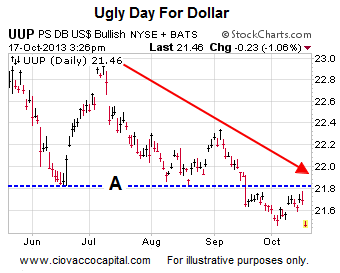SAIC (NYSE: SAI ) is helping to keep America safe from chemical and biological weapons. The only question is how much help it will be allowed to give.
On Monday, SAIC announced that it has won one of "multiple" awards to provide program, engineering, medical, and technical support services�to the government's Joint Program Executive Office for Chemical and Biological Defense. This multiple-award indefinite-delivery/indefinite quantity (IDIQ) contract has an initial three-year base period of performance. If necessary, it may be extended by as many as two one-year "options" periods, and a final six-month option as well -- five and a half years total, if all options are exercised. In that event, says SAIC, the total value of the contract could reach $495 million.
Not all of this money may go to SAIC, however. Indeed, given that SAIC says 42 contractors have won awards similar to the one SAIC announced Monday, it seems likely that quite a lot of the contract's funding will go to entities other than SAIC.
Top Medical Companies To Own In Right Now: Curis Inc.(CRIS)
Curis, Inc., a drug discovery and development company, focuses on the research and development of cancer therapeutics. The company, under collaboration with Genentech, Inc., is conducting a pivotal Phase II clinical trial on its lead molecule, GDC-0449 in advanced basal cell carcinoma patients, as well as various Phase II clinical trials in first-line metastatic colorectal cancer and advanced ovarian cancer patients. It is also evaluating CUDC-101, a small molecule that is in a Phase I clinical testing and is designed to target histone deacetylase, epidermal growth factor receptor, and epidermal growth factor receptor 2. In addition, Curis has a development candidate, Debio 0932, which is a Heat Shock Protein 90 or Hsp90 inhibitor. The company holds a license agreement with Debiopharm related to its Hsp90 technologies. Further, it involves in preclinical testing for the development of candidates from its targeted cancer programs. The company was founded in 2000 and is base d in Lexington, Massachusetts.
Top Medical Companies To Own In Right Now: Quintiles Transnational Holdings Inc (Q)
Quintiles Transnational Holdings Inc. is a provider of biopharmaceutical development services and commercial outsourcing services. The Company operates in two segments: Product Development and Integrated Healthcare Services. The Company�� Product Development segment operates as a contract research organization (CRO) focused primarily on Phase II-IV clinical trials and associated laboratory and analytical activities. The Company�� Integrated Healthcare Services segment is a global commercial pharmaceutical sales and service organizations and Integrated Healthcare Services provides a range of services, including commercial services, such as providing contract pharmaceutical sales forces in geographic markets, as well as healthcare business services for the healthcare sector, such as outcome-based and payer and provider services. In August 2012, it acquired Expression Analysis, Inc.
Product Development
Product Development provides services and that allow biopharmaceutical companies to outsource the clinical development process from first in man trials to post-launch monitoring. The Company�� service offering provides the support and functional necessary at each stage of development, as well as the systems and analytical capabilities. Product Development consists of clinical solutions and services and consulting. Clinical solutions and services provides services necessary to develop biopharmaceutical products, including project management and clinical monitoring functions for conducting multi-site trials (generally Phase II-IV) (core clinical) and clinical trial support services that improve clinical trial decision making and include global laboratories, data management, biostatistical, safety and pharmacovigilance, and early clinical development trials, and strategic planning and design services that improve decisions and performance. Consulting provides strategy and management consulting services based on life science and advanced analytics, as well as regulatory and comp! liance consulting services.
The Company competes with Covance, Inc., Pharmaceutical Product Development, Inc., PAREXEL International Corporation, ICON plc, inVentiv Health, Inc. (inVentive), INC Research and PRA International.
Integrated Healthcare Services
Integrated Healthcare Services provides the healthcare industry with both geographic presence and commercial capabilities. The Company�� commercialization services are designed to accelerate the commercial of biopharmaceutical and other health-related products. Service offerings include commercial services (sales representatives, strategy, marketing communications and other areas related to commercialization), outcome research (drug therapy analysis, real-world research and evidence-based medicine, including research studies to prove a drug�� value) and payer and provider services comparative and cost-effectiveness research capabilities, clinical management analytics, decision support services, medication adherence and health outcome optimization services, and Web-based systems for measuring quality improvement.
The Company competes with inVentiv, PDI, Inc., Publicis Selling Solutions, United Drug plc, EPS Corporation and CMIC HOLDINGS Co., Ltd.
StemCells, Inc. (StemCells), incorporated in August 1988, is engaged in the research, development, and commercialization of stem cell therapeutics and related tools and technologies for academia and industry. The Company is focused on developing and commercializing stem and progenitor cells as the basis for therapeutics and therapies, and cells and related tools and technologies to enable stem cell-based research and drug discovery and development. The Company�� primary research and development efforts are focused on identifying and developing stem and progenitor cells as potential therapeutic agents. The Company has two therapeutic product development programs, including its CNS Program, which is developing applications for HuCNS-SC cells, its human neural stem cell product candidate, and its Liver Program, which is characterizing the Company�� human liver cells as a therapeutic product.
CNS Program
The Company in its CNS Program, is in clinical development with its HuCNS-SC cells for a range of disorders of the central nervous system. The CNS includes the brain, spinal cord and eye. In February 2012, the Company had completed a Phase I clinical trial in Pelizeaus-Merzbacher Disease (PMD), a fatal myelination disorder in the brain.
The Company�� CNS Program is focused on developing clinical applications, in which transplanting HuCNS-SC cells protect or restore organ function of the patient before such function is irreversibly damaged or lost due to disease progression. The Company�� initial target indications are PMD, and more generally, diseases in which deficient myelination plays a central role, such as cerebral palsy or multiple sclerosis; spinal cord injury, disorders in which retinal degeneration plays a central role, such as age-related macular degeneration or retinitis pigmentosa. The Company�� product candidate, HuCNS-SC cells, is a purified and expanded composition of normal human neural stem cells. Its HuCNS-SC cells can be directly transp! lanted.
Liver Program
Liver stem or progenitor cells offer an alternative treatment for liver diseases. A liver cellular therapy or cell-based therapeutic provide or support liver function in patients with liver disease. The Company held a portfolio of issued and allowed patents in the liver field, which cover the isolation and use of both hLEC cells and the isolated subset, as well as the composition of the cells themselves.
The Company�� range of cell culture products, which are sold under the SC Proven brand, includes iSTEM, GS1-R, GS2-M, RHB-A, RHB-Basal, NDiff N2, and NDiff N2B27. Its iSTEM is a serum-free, feeder-free medium that maintains mouse embryonic stem cells in their pluripotent ground state by using selective small molecule inhibitors to block the pathways, which induce differentiation. RHB-A is a defined, serum-free culture medium for the selective culture of human and mouse neural stem cells and their maintenance and expansion as adherent cell populations. RHB-Basal is a defined, serum-free basal medium. When supplemented with specific growth factors, this media is formulated for the propagation and differentiation of adherent neural stem cells. RHB-Basal can also be tailored to specific-cell type requirements by the addition of customer preferred supplements.
The Company�� NDiff N2 is a defined serum-free scell culture supplement for the derivation, maintenance, expansion and/or differentiation of human and mouse embryonic stem (ES) cells and tissue-derived neural stem cells supplement. Its NDiff N2-AF is a serum-free and animal component-free version of NDiff N2. Its NDiff N2B27 is a defined, serum-free medium for the differentiation of mouse embryonic stem cells to neural cell types. NDiff N27-AF is a serum-free and animal component-free version of NDiff N27. Its GS1-R is a serum-free media formulation shown to enable the derivation and long-term maintenance of true, germline competent rat embryonic stem cells without the add! ition of ! cytokines or growth factors. Its GS2-M is a defined, serum- and feeder-free medium for the derivation and long-term maintenance of true, germline competent mouse iPS cells.
The Company also markets a number of antibody reagents for use in cell detection, isolation and characterization. These reagents are also under the SC Proven brand and it includes STEM24, STEM101, STEM121 and STEM123. Its STEM24 is a human antibody that recognizes human CD24, also known as heat stable antigen (HSA), a glycoprotein expressed on the surface of many human cell types, including immature human hematopoietic cells, peripheral blood lymphocytes, erythrocytes and many human carcinomas. Its CD24 is also a marker of human neural differentiation. Its STEM101 is a human-specific mouse antibody that recognizes the Ku80 protein found in human nuclei. Its STEM121 is a human-specific mouse antibody that recognizes a cytoplasmic protein of human cells. Its STEM123 is a human-specific mouse antibody that recognizes human glial fibrillary acidic protein (GFAP).
The Company�� Other products marketed under SC Proven include total cell genomic DNA (gDNA), RNA and protein lysate reagents purified from homogenous stem cell populations for intra-comparative studies, such as Epigenetic fingerprinting, Southern, Western and Northern blots, PCR, RT-PCR and microarrays. This range of purified stem cell line lysates includes mouse embryonic stem (ES) cells propagated in SC Proven 2i inhibitor-based GS2-M media and mouse ES cell-derived and fetal tissue-derived neural stem (NS) cells propagated in SC Proven RHB-A media.
Advisors' Opinion: - [By James E. Brumley]
When an investor thinks of spinal-related stem cell stocks, usually a name like Neuralstem, Inc (NYSEMKT: CUR) or StemCells Inc (NASDAQ: STEM) comes to mind. And well they should. STEM has logged some amazing breakthroughs in the field of spinal cord repair, while CUR has done the same. Not all back problems are spinal cord related though. In fact, most back problems - and therefore the most opportunity - are bone and disc related problems. That's where a young gun like BioRestorative Therapies (OTCBB: BRTX) can step in and make stem cell waves. BRTX has developed an approach to rejuvenate and revive failing spinal discs, potentially ending pain for millions of back-pain sufferers, and circumventing expensive spinal surgeries that are in increasing burden on insurance companies.
- [By John Udovich]
The results of a recent Pew Center Poll regarding attitudes towards abortion and various forms of stem cell research could be a good sign for the stem cell industry along with small cap stem cell stocks like StemCells Inc (NASDAQ: STEM), NeoStem Inc (NASDAQ: NBS), Neuralstem, Inc (NYSEMKT: CUR),�International Stem Cell Corp (OTCMKTS: ISCO) and BioRestorative Therapies (OTCBB: BRTX). Basically, Americans think that having an abortion is a moral issue with 49% of American adults believing abortion is morally wrong, 23%�view it not as a moral issue and and 15% view it as morally acceptable. However and when Americans were asked about issues surrounding�human embryos, such as stem cell research or in vitro fertilization, as a matter of morality, their views were different.
Top Medical Companies To Own In Right Now: Spectrum Pharmaceuticals Inc.(SPPI)
Spectrum Pharmaceuticals, Inc., a commercial-stage biotechnology company, primarily focuses on oncology and hematology. The company engages in acquiring, developing, and commercializing a broad and diverse pipeline of late-stage clinical and commercial products. It markets Zevalin, a prescribed form of cancer therapy, radioimmunotherapy; and Fusilev, a novel folate analog formulation and the pharmacologically active isomer of the racemic compound, calcium leucovorin. The company?s drugs in late stage development include Apaziquone, an anti-cancer agent; and Belinostat, a histone deacytelase inhibitor. Its drugs in development also include Ozarelix a luteinizing hormone releasing hormone antagonist, which is in Phase II clinical stage; SPI-1620, a peptide agonist of endothelin B receptors, which is in Phase I clinical stage; and RenaZorb, a lanthanum-based nanoparticle phosphate binding agent, which is in preclinical stage. The company was formerly known as NeoTherapeutics, Inc. and changed its name to Spectrum Pharmaceuticals, Inc. in December 2002. Spectrum Pharmaceuticals, Inc. was founded in 1987 and is based in Henderson, Nevada.
Advisors' Opinion: - [By Rich Smith]
Spectrum Pharmaceuticals (NASDAQ: SPPI ) has found itself a new Executive Vice President, a new Chief Financial Officer, and a new Principal Accounting�Officer. They're all the same person.
- [By Keith Speights]
Biotech stocks are highly volatile. A good example of this is Spectrum Pharmaceuticals (NASDAQ: SPPI ) . Spectrum rode a wave of generic leucovorin shortages in late 2010 and early 2011 to stock gains of more than 170%. Shares then plunged more than 30% from July through September 2011. But the ride wasn't over yet.
Top Medical Companies To Own In Right Now: Scancell Holdings PLC (SCLP.L)
Scancell Holdings PLC is a United Kingdom-based company. The Company�� principal activity of the consists of the discovery and development of monoclonal antibodies and vaccines for the treatment of cancer. In April 2012, the Company completed recruitment to the Phase 1 clinical trial of SCIBI. In May 2012, the Company commenced recruitment and treatment of the first patient in the second part of it Phase 1/2 clinical trial of SCIBI. The Phase 2 part of the trial is conducted in five United Kingdom centers in Nottingham, Manchester, Newcastle, Leeds, and Southampton. On August 15, 2012, the Company announced the development of a platform technology, Moditope.






 Errors still bug Obamacare website
Errors still bug Obamacare website 





 DFS data by YCharts Interested in more on Discover Financial Services? See TheStreet Ratings' report card for this stock. RELATED STORIES: Wells Fargo Could Hit Earnings Cliff Soon: Analyst Nobel Winner Robert Shiller Says There Is No Housing Bubble... Yet Robert Shiller, Eugene Fama Nobel Prize Undercuts Wall Street Science JPMorgan Report Bodes Well for Goldman, Citi: KBW A Mopping-Up Quarter for JPMorgan, Other Mortgage Lenders -- Written by Philip van Doorn in Jupiter, Fla. >Contact by Email. Follow @PhilipvanDoorn
DFS data by YCharts Interested in more on Discover Financial Services? See TheStreet Ratings' report card for this stock. RELATED STORIES: Wells Fargo Could Hit Earnings Cliff Soon: Analyst Nobel Winner Robert Shiller Says There Is No Housing Bubble... Yet Robert Shiller, Eugene Fama Nobel Prize Undercuts Wall Street Science JPMorgan Report Bodes Well for Goldman, Citi: KBW A Mopping-Up Quarter for JPMorgan, Other Mortgage Lenders -- Written by Philip van Doorn in Jupiter, Fla. >Contact by Email. Follow @PhilipvanDoorn  Hopper Stone, SMPSP
Hopper Stone, SMPSP